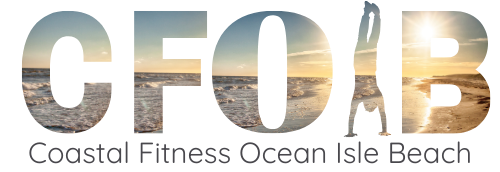Top 10 Pitfalls to Weight Loss: Don’t Make These Common Mistakes
By Charles Poliquin
A lack of discipline may be the most harmful trait if you are trying to lose weight. But, even if you are motivated and disciplined, you need to ensure you aren’t getting sidetracked by making common errors that will halt your progress and are easy to avoid.
There are hundreds of lists on the internet of common errors people make when trying to lose weight. They are all similar, most include ten things to avoid, and you might be surprised to find out that they are mostly right on. These lists provide a useful basic guide to use when trying to lose weight, but what they don’t do is get at the harder to solve mistakes that keep you from seeing results in improving your body composition.
For example, did you know that for weight loss and health it’s much better to choose the “whole fat” version of dairy products than the “fat free” option? Almost all foods that have had the fat removed from them and are labeled “fat free” are going to be more contaminated, contain fewer nutrients, and discourage fat loss to a much greater degree than the whole fat option. This is especially true with dairy products because the whole milk version of yogurt or milk will naturally provide conjugated linoleic acid (CLA), which protects against prostate and breast cancer. In contrast, fat free dairy products have what I often call a “cancer inducing” effect.
I’ve had many a client with the best of intentions for weight loss make critical but common errors, that when solved, allow them to achieve amazing results. This is my top ten list of things you can do to avoid common pitfalls that get in the way of you achieving a lean body composition. This list assumes that you aren’t doing any of the following things that are obviously going to impede weight loss and cause poor health: smoking, drinking large amounts of alcohol, taking diet pills, drinking your calories (soda, juice, sports drinks), or trying to lose weight without exercising. If you are doing any of these things, stop now, and then start making the changes on this list.
Tip 1: Don’t Eliminate Fat
Eliminating fat or eating a very low fat diet is a common error that people are encouraged to make by food marketing. Eliminating fat intake to get rid of fat from the body may seem like a good idea at first glance, but when you understand the role of fat in the body, you realize getting too little of it is a bad idea. Of course, removing “very bad” fats, also known as trans fats, from the diet is essential because they will make you fat and then they will kill you.
You need a decent amount of good fat in the diet because all the cells in the body are made up of two layers of lipids or fats, which will be composed of good fats or bad fats depending on the type you eat. If the cell lipid layers are made up of healthy fats, it will make them more sensitive to insulin and allow the receptors to bind more easily, which is necessary for good metabolism and energy production.
Increasing the sensitivity of your cells to insulin is important because it will allow the glucose to enter the cell and get burned as fuel. But, if you eat large amounts of trans-fats or have a severe imbalance between the omega-6 and -3 fats in your diet, your cell lipid layers will be made up of those fats. Lipid layers made of unhealthy fats lead to unhealthy cells and greater insulin resistance, which produces fat gain and puts you at risk for diabetes.
Tip 2: Do Get A Balanced Fat Intake
To get a balanced fat intake you want to get a large quantity of omega-3 fats that are balanced with omega-6 fats. Ideally, you’ll get a near equal ratio of omega-3 to omega-6 fats. Most people get way to many omega-6 fats because they are abundantly found in our diets in the form of the most commonly used vegetable oils (corn, sesame, safflower, peanut, etc.). Omega-3 fatty acids are those that commonly come from fish oil (often referred to as DHA, EPA and ALA), but they also can be gotten from grass-fed beef and wild meats. This is why I suggest two things you can do for better insulin health and body composition are to take a high dose of omega-3s and eat meats and fish that have a high concentration of these fats.
I recommend a fish oil dose in the range of 1 to 1.5 grams of omega-3s per percent of body fat, meaning if you have 20 percent body fat you would take 20 grams. Many people like to start taking a more conservative dose, which is fine, but think of it as if you are replacing your daily fat intake goal with fish oil. For example, if it is 50 grams, replacing 20 of those grams with an omega-3 supplement is an easy thing to do.
Tip 3: Go here for the full article . . .

Great article. Thanks Coach K. You do a phenomenal job and we appreciate it.